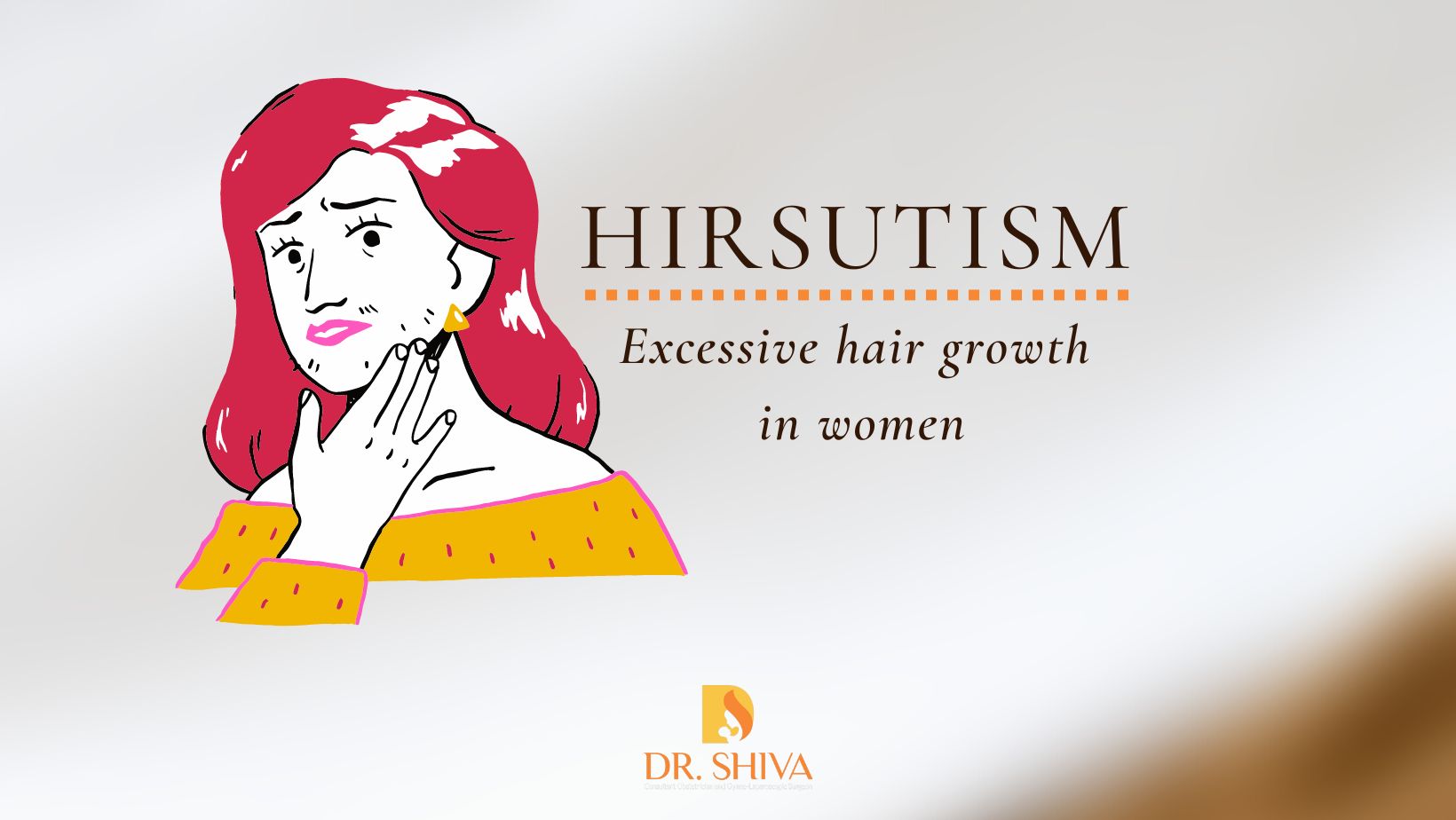
Hirsutism is a medical condition characterized by excessive hair growth which is dark or coarse (like men have) in women in areas where hair growth is usually minimal or absent, such as the face, chest, and back. It can result in physical and emotional discomfort and can negatively impact a woman’s self-esteem. It is due to the presence of excess male hormone – testosterone.
Symptoms of Hirsutism
As androgens levels rise, you may notice other symptoms emerge; this is known as virilization. The signs include-
- Irregular periods
- Acne or oily skin
- Deepening of the voice
- Decrease in breast size
- Enlargement of the clitoris
- Thinning hair on the head
Causes:
- Polycystic Ovary Syndrome (PCOS) is a hormonal disorder affecting women of reproductive age. It causes an imbalance of the sex hormones and is one of the most common causes of hirsutism.
- Crushing syndrome: This occurs when there is a high level of cortisol in your body. It can be caused by a disorder in your adrenal gland, resulting in producing too much amount of cortisol, or by having medications like prednisone over a long period.
- Ovarian Tumours: Rarely the presence of tumors, in ovaries or adrenal glands, that secrete androgens can cause hirsutism.
- Congenital Adrenal Hyperplasia (CAH): CAH is a genetic disorder that affects the adrenal glands, leading to an overproduction of androgens.
- Medications: Certain medications can cause hirsutism as a side effect.
Factors that can increase the risk of having hirsutism:
- Family History
- Being Obese
Diagnosis:
- Blood tests to check the level of hormones in the blood.
- Pelvic scan to ensure if there are any tumors or not.
Treatment of Hirsutism:
- Medications: Drugs will be prescribed to regulate hormone levels and reduce hair growth.
- If you have PCOS or are obese reducing your weight by having healthy food and regular exercise can help control hormone levels.
- Another method involves removing the hair.
- Electrolysis is a permanent hair removal method that makes use of electrical currents to destroy hair follicles.
- Laser Hair Removal, a non-invasive method that uses laser energy to remove hair.
- Waxing and Shaving: Waxing and shaving are temporary methods of removing hair, but they can cause skin irritation and ingrown hairs.
- Depilation: Depilation is a temporary method of removing hair by applying a cream or lotion that dissolves hair.
It is important to consult a doctor to determine the underlying cause of hirsutism and to receive appropriate treatment. Hirsutism can be a symptom of a larger medical issue, and prompt diagnosis and treatment can help prevent further complications.

Recent Comments